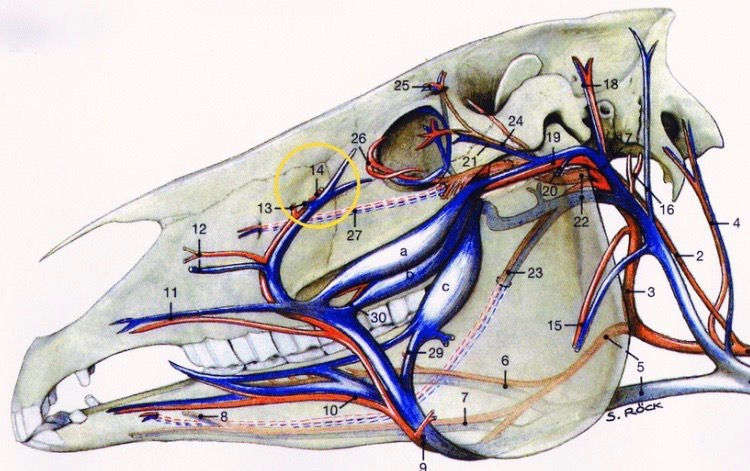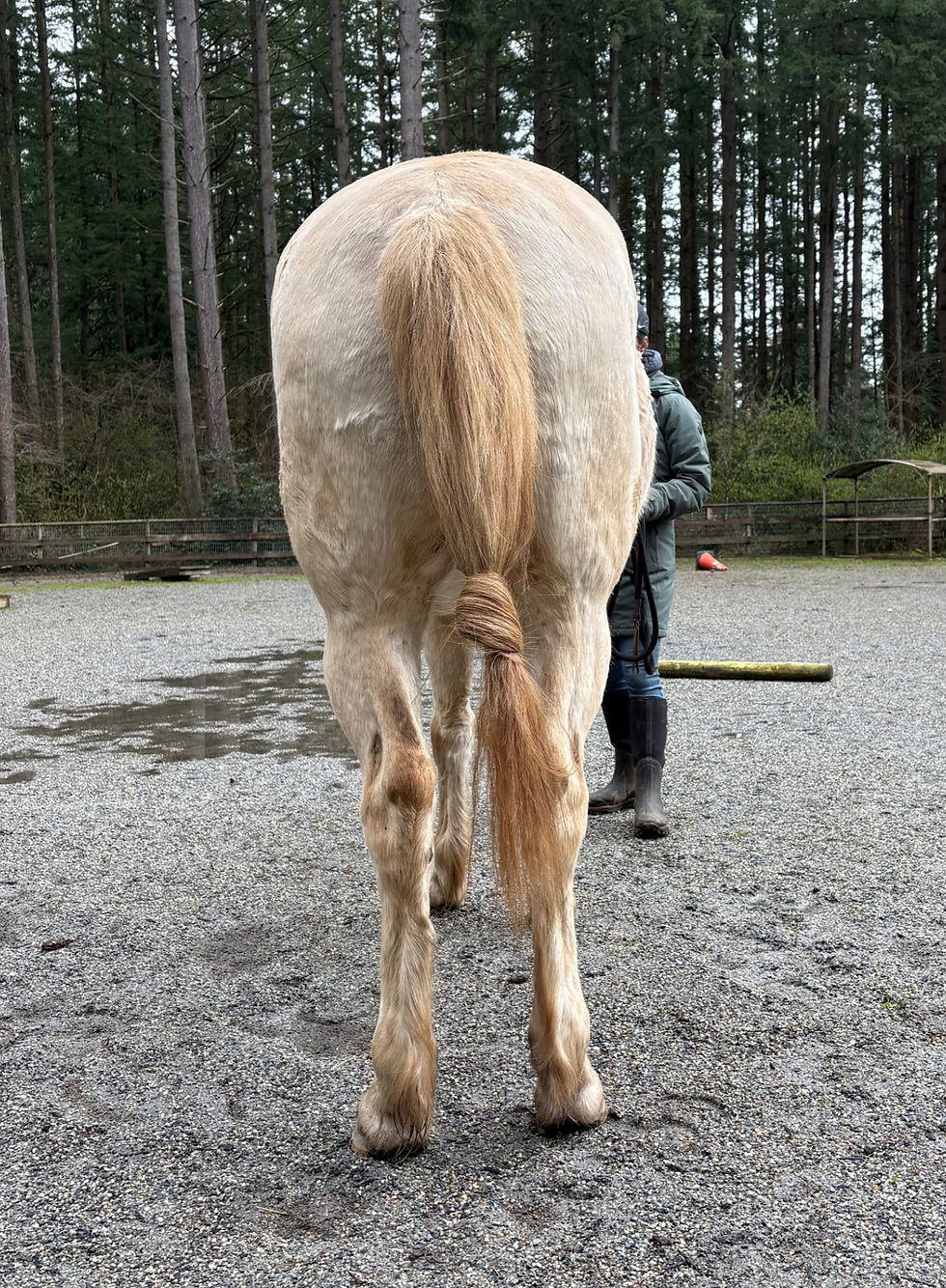Cranial Treatment for Chronic Nosebleeds
- Elisse Miki

- Aug 31, 2019
- 3 min read
Updated: May 26

This is Thunder, one of my four horses that I have been rehabilitating for the last two years. He came into my life with two subluxed ribs, anteriorly displaced L1/L2, and a ringbone diagnosis in his front left. But that was not the worst of it - he also suffered from regular nosebleeds (every 2-3 days) and this became an issue of particular interest for me because I had never encountered this in a horse before.
The onset of nosebleeds didn’t seem to follow any systematic order, nor did they correlate with any sort of movement as far as I could tell. He would get them when in a prolonged stationary position (eating at the hay box), during light movement (walking on trails) and even when he was just meandering about in the field. In light of my confusion I decided to seek veterinary advice. It was recommended that I have him scoped for potential bleeding coming from the lungs, but this showed up as negative. The vet told me this was likely “just how he is” and that it wouldn’t affect his quality of life.
I intuitively knew this to be untrue based on my education and research into dysfunctions affecting the face so I wouldn’t accept that statement as truth because it strikes me as obvious that a nose doesn’t bleed so often for no reason. At the same time I was focusing my studies in cranial therapy and osteopathy and had just learned the exit points of the major blood vessels in the face as they relate to bone positioning. The answer became stunningly clear – a light bulb went off in my brain and I ran out to the field to find Thunder.

My assumption was that he had displaced cranial bones with subsequent blood vessel impingement causing frequent nosebleeds, perhaps even just from the movement of chewing. I assessed him immediately and found that he had restriction and displacement in multiple bones on the left side of his face. I proceeded to treat him directly after finding each restriction, and the results were beyond rewarding.
In the before picture below you can see his left eye is elevated and sunken back. As well, his left nostril was tensioned back towards his jawline. I treated him only the one time and the results absolutely blew me away. Post treatment you can see that his left eye has moved closer in line with the right eye and less wrinkling indicates reduced tension to the entire eye socket. Furthermore, his nostrils are now evenly placed and the white markings on his nose have moved closer to midline. But the most important and astounding result of all following treatment is that he never suffered another nosebleed again to this date!

I am sharing this information because I am deeply rooted in the understanding of complex relationships within the body. At times this can sound foreign because much of conventional medical training does not delve this deep into the understanding of these relationships, but rather towards testing and diagnosis. In both my human and equine patients I frequently see a lack of investigation beyond common medical screening practices and this is something I seek to improve so that all practitioners may work together in better harmony. My hopes in disclosing this case is that other horse owners and therapists will be inspired to keep learning and reaching further into the care of their equines and never accept the “this is just how they are” type advice.
Ready to Learn More?
Explore our Free Resources for tools you can use right away, dive into our Online Courses to deepen your knowledge, or join one of our Certification Programs to take your equine therapy practice to the next level.






Comments